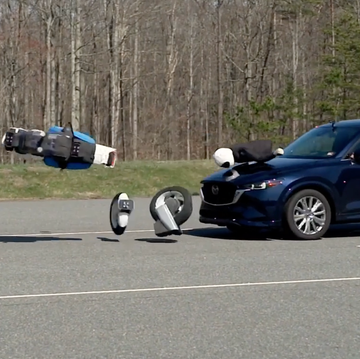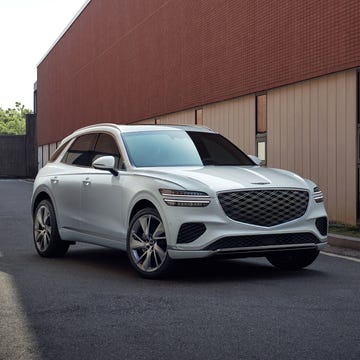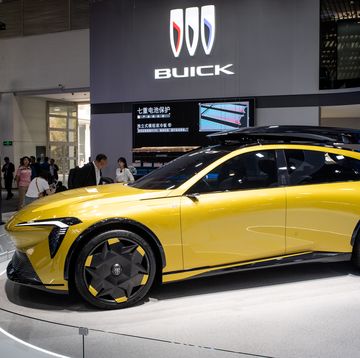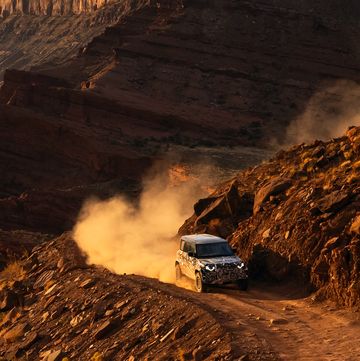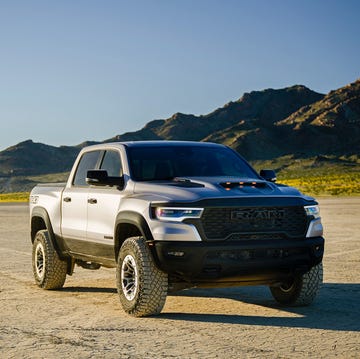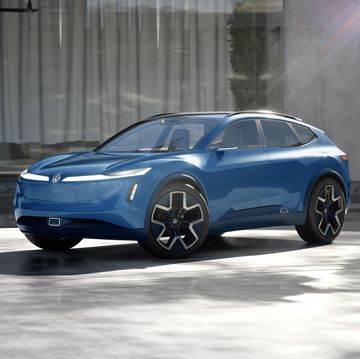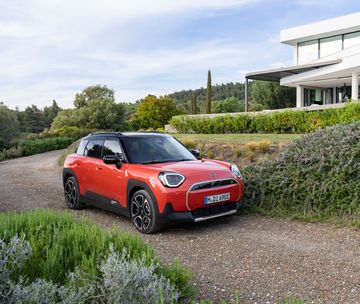From the December 2013 Issue of Car and Driver
In a nation obsessed with the right now, few things have held up over the past 50 years as well as the Ford Mustang. The first pony car debuted at the 1964 New York World’s Fair and instantly became a tent pole of Americana. Before the model officially turns 50 on April 17, 2014, Ford will celebrate its lasting contribution to the postwar-boom culture with a brand-new, much anticipated Mustang.
But the times, they are a changin’ (yep, a song also released in 1964). Ford’s American icon continues to gain offshore admirers. The Blue Oval plans to sell the next Mustang globally, and to appease overseas buyers, the car will need to be lighter and more efficient. But that’s not to say that traditional fans will be disappointed.
Bodywork
While the new Mustang will keep the somewhat hefty proportions of its predecessor, exterior dimensions will shrink ever so slightly. It will also cease to have stand-alone styling within Ford’s lineup. A number of design cues will evoke the familial design language pioneered by the Fusion, and the Mustang’s new front end clearly has been influenced by the brand’s Evos concept from the 2011 Frankfurt show.
The car’s headlight motif joins the rest of the Ford family, but the upright grille remains Mustang-esque. It makes subtle use of the brand’s current Aston Martin-via-Dearborn mouth while still maintaining an appearance that’s unflinchingly pony car. The design process has taken longer than the folks at Ford would’ve hoped, we’re told, after the initial proposal was rejected for not being Mustang enough. We imagine that it was a little too Euro-soft, a little too much like the Evos.
In the final shape, a pair of large vents resides on the front of the hood, creating the appearance of flared mustang nostrils that hint at the power lurking beneath. The rear window features a sort of widow’s peak extending from the roof, à la the SRT Viper, and the side windows feature a more cohesive shape—as opposed to the quarter-windows separated by fat B-pillars on the current car—with an upward kink that resembles the new Corvette’s treatment.
Interior
Retro is not completely dead in the new cockpit, either. Two large, tubular gauges will continue to sit in front of the driver as they do today, and circular air vents will reside atop the center stack, flanked by a rectangular duct at each end. The upper portion of the dashboard will be canted forward and have dual cowls, another cue from the Mustang museum.
The center stack will offer either traditional stereo and HVAC controls or the MyFord Touch do-everything touch screen, available for the first time in a Mustang. After taking a drubbing in customer-satisfaction surveys, Ford is emphasizing the evolution of the MyFord Touch interface. The next-gen system debuts in the Mustang, offering redundant buttons and switchgear for those who prefer to handle real controls instead of virtual ones. The changeable ambient lighting continues, but it will spread beyond the dials, cup holders, and speakers to other points within the cabin, something also found in European luxury cars like the new S-class.
Carry-Over Powertrains
At launch, the Mustang will be available with the same engine options offered by the current Mustang: a naturally aspirated 3.7-liter V-6 and the “Coyote” 5.0-liter V-8, each with the same power ratings as the Mustangs on showroom floors today (305 and 420 horsepower, respectively). Transmissions, too, will carry over at the outset, with shoppers given a choice of a six-speed manual or a six-speed automatic. That will change in the two to three years after launch, when the 10-speed auto being jointly developed with GM will replace the six-speed slushbox.
However, the Mustang’s 2015 model year will be a long one—as was 1965—and thus, Ford will offer powertrain upgrades in the months after its launch. Updates to the V-6 will be minimal, but we understand that the GT-badged “five-oh” will jump to 500 horsepower.
Turbo-Four Cafe Special
Sometime after the new Mustang reaches dealer lots, we will begin to see interesting underhood options. With European and federal fuel-economy standards in mind, Ford will introduce the first turbocharged four-cylinder Mustang since the 1986 SVO model. And the engine will be the same size, 2.3 liters, as that car’s four-banger. It’ll generate 310 horsepower with direct injection, and it will be marketed as an uplevel alternative to the base six. Its premium should be justified not only by its expected mileage gain but also by its high, flat torque curve.
Ford is also considering offering the 3.5-liter EcoBoost V-6 found in the Taurus SHO. Tuned to churn out 400 horsepower (up from the 365 it makes in the SHO), this engine could potentially replace the 3.7-liter V-6 and serve as a natural steppingstone between the turbo four and the Coyote. The EcoBoost V-6 is unlikely to appear in the Mustang’s engine bay before the 2017 model year.
A Stable Full of Wild Horses
Ford has many plans for ultra-high-performance Mustangs. The first will be a successor to the Shelby-branded GT500, and the company will continue to offer Ford’s “Trinity” supercharged 5.8-liter V-8 making 662 horses. Past the new-gen Shelby GT500, Ford has additional powertrain options for two more hi-po nameplates.
The first is a twin-turbocharged V-8, code-named “Voodoo,” which displaces between 5.0 and 5.5 liters and, most intriguingly, has a “flat-plane” or 180-degree crankshaft, as Ferrari has used in its V-8s since 1973. This configuration, also found in the late Lotus Esprit V-8, is akin to connecting two four-cylinder banks to a common crankshaft. Flat cranks theoretically improve power, throttle response, and the soundtrack at the expense of greater vibration. This EcoBoost V-8 will produce between 550 and 600 horses. It will power a Shelby GT350–branded model that eventually will take over from the GT500, as Ford is desperate to discontinue that car’s costly and thirsty Trinity.
The last high-performance Mustang will be a successor to the Boss 302. What will power it is still not finalized. If all goes according to plan, Ford would like to use a naturally aspirated version of the Voodoo engine. However, initial testing has not yielded the desired results in Dearborn, and it’s possible that a hotted-up version of the 5.0 Coyote could be used—as was the case in the previous Boss.
Chassis
The introduction of an independent rear suspension, not seen in Mustangdom outside of the 1999–2004 SVT Cobra, will improve handling, ride comfort, and packaging. This should address some key Mustang criticisms and lend it credibility when taking on its European contemporaries in markets where the pony-car genre isn’t sustained by nostalgia and cheap fuel, as it is here. A new platform—code-named “S550”—will underpin this new Mustang, and through that architecture, Ford is expecting to shed some 200 pounds from the current car’s roughly 3500-pound curb weight.






